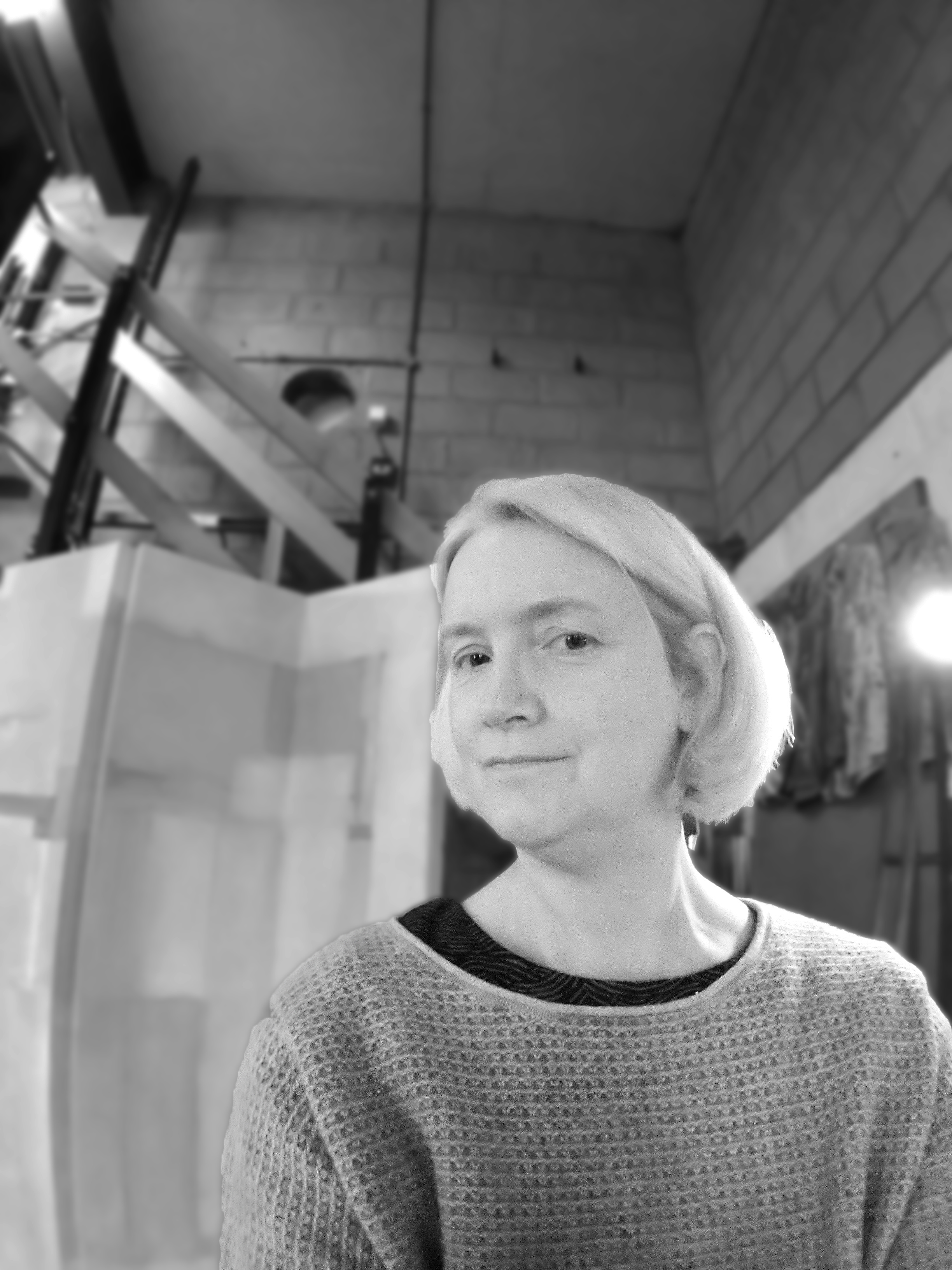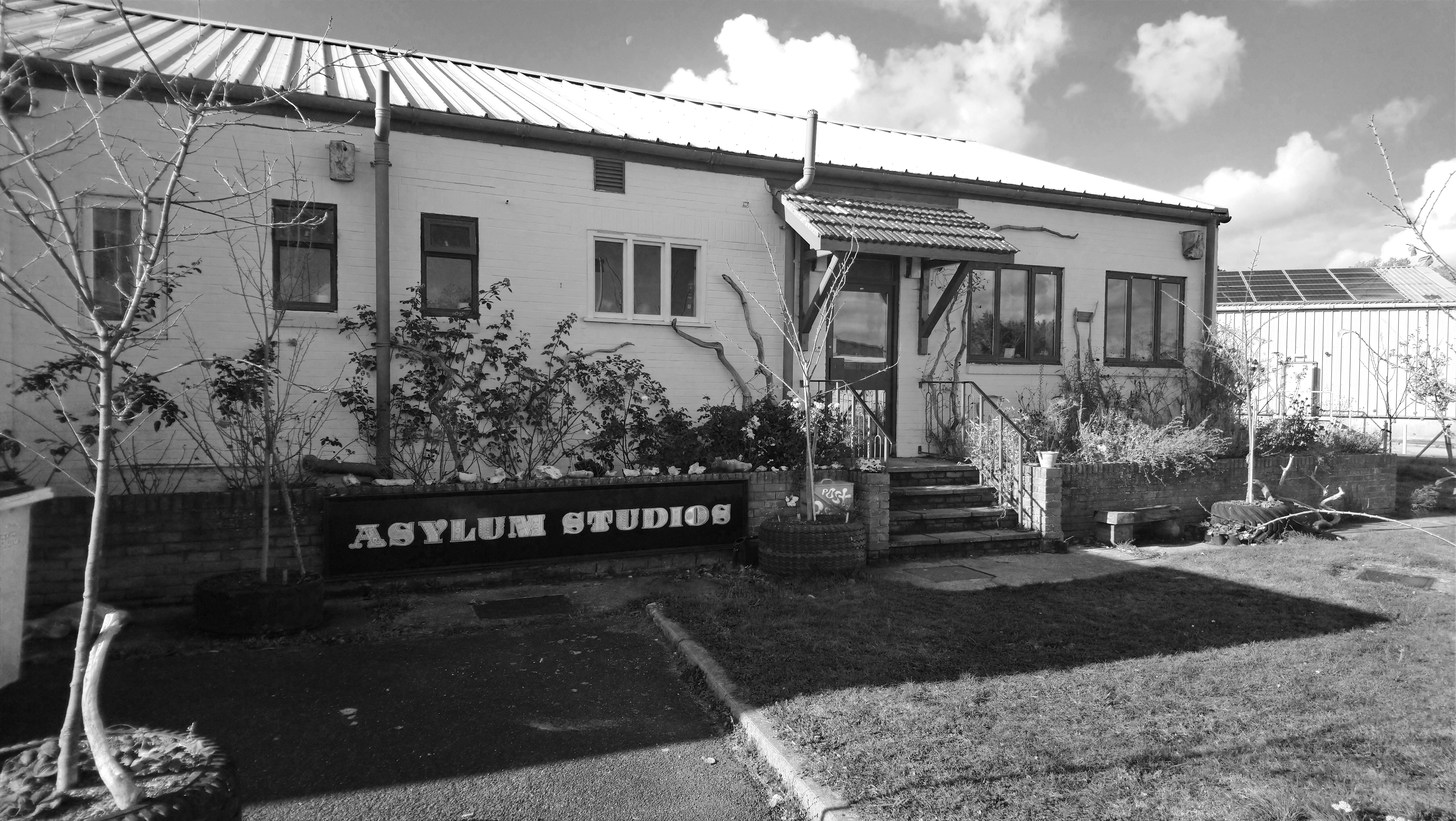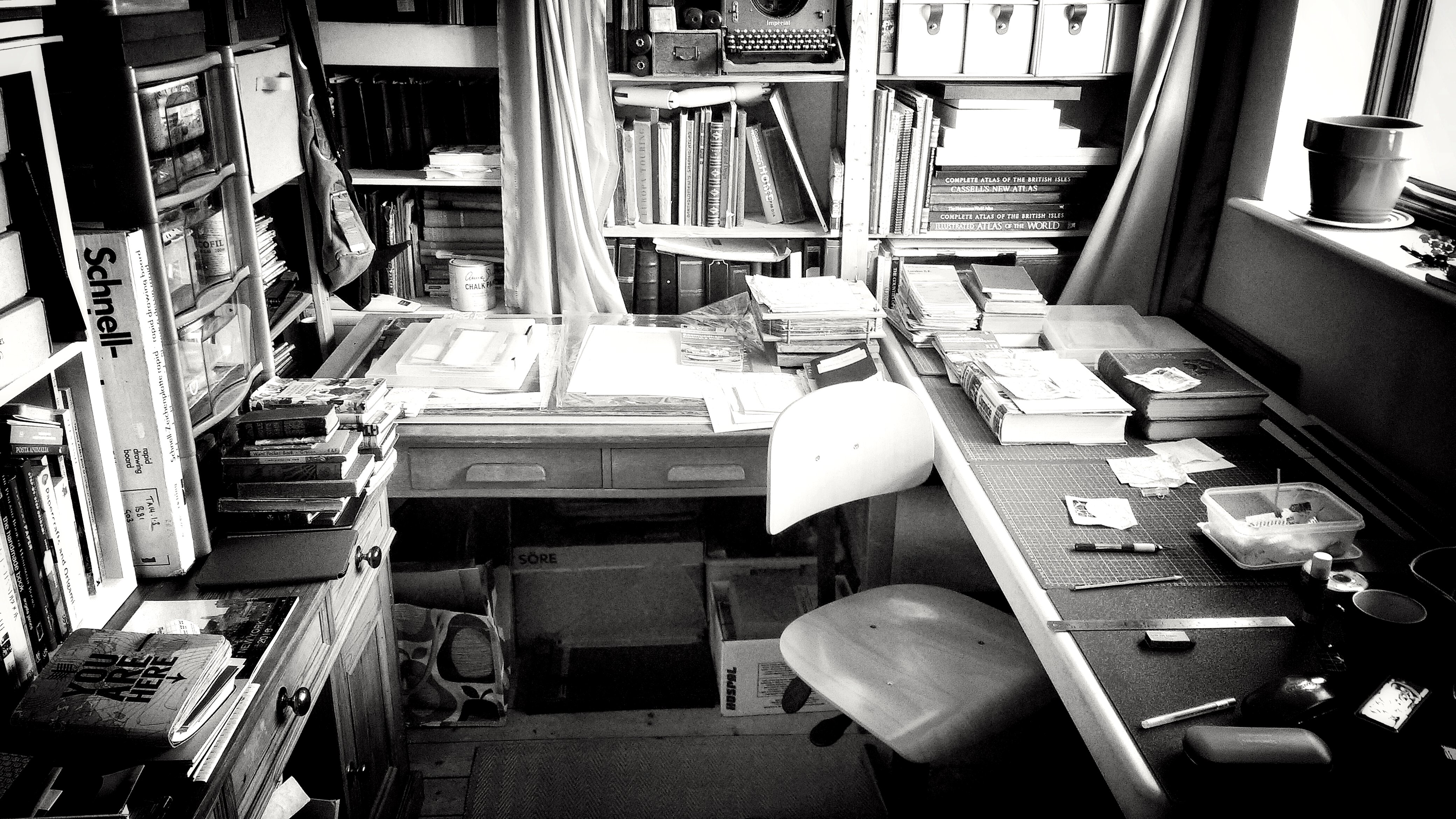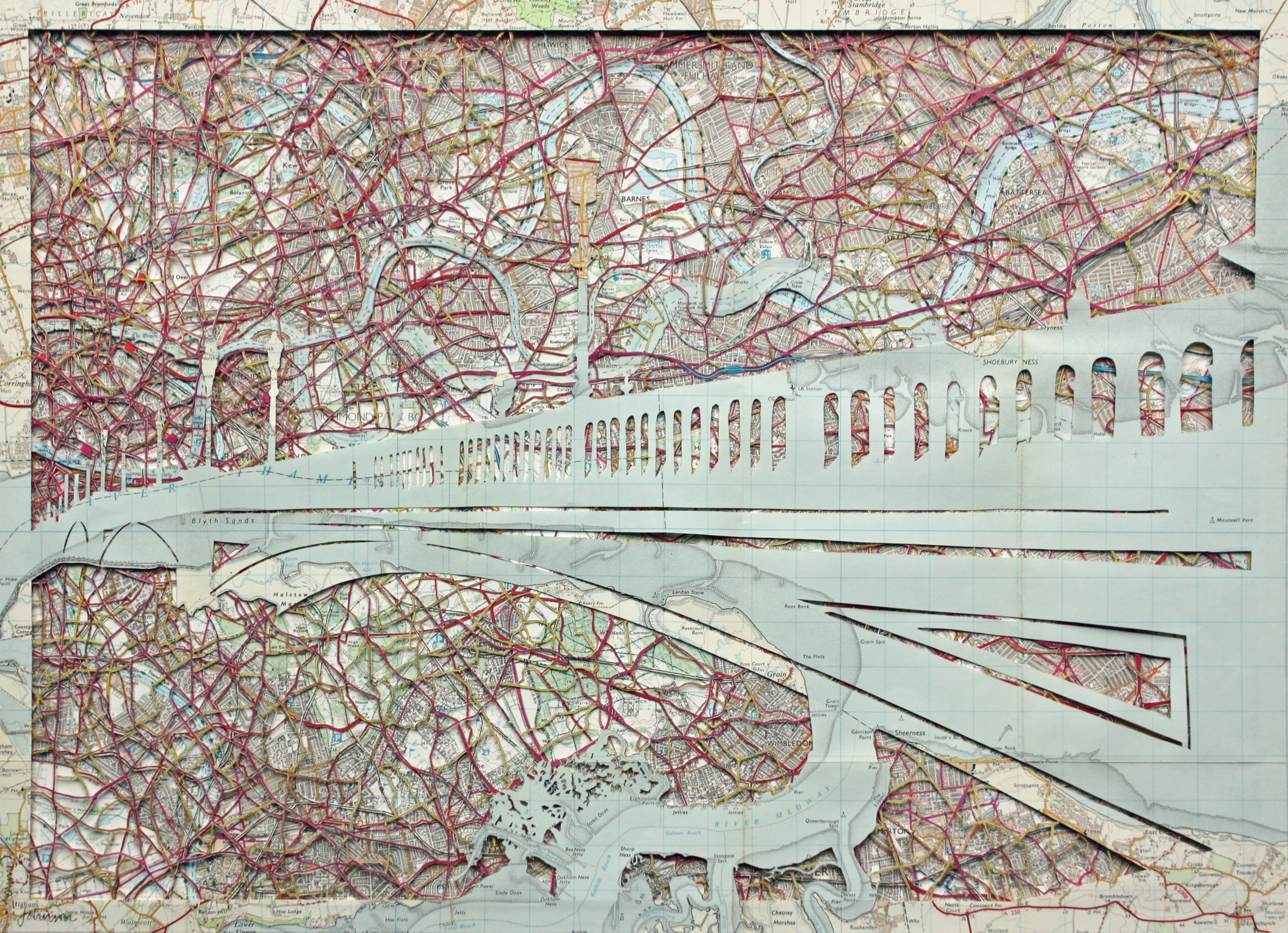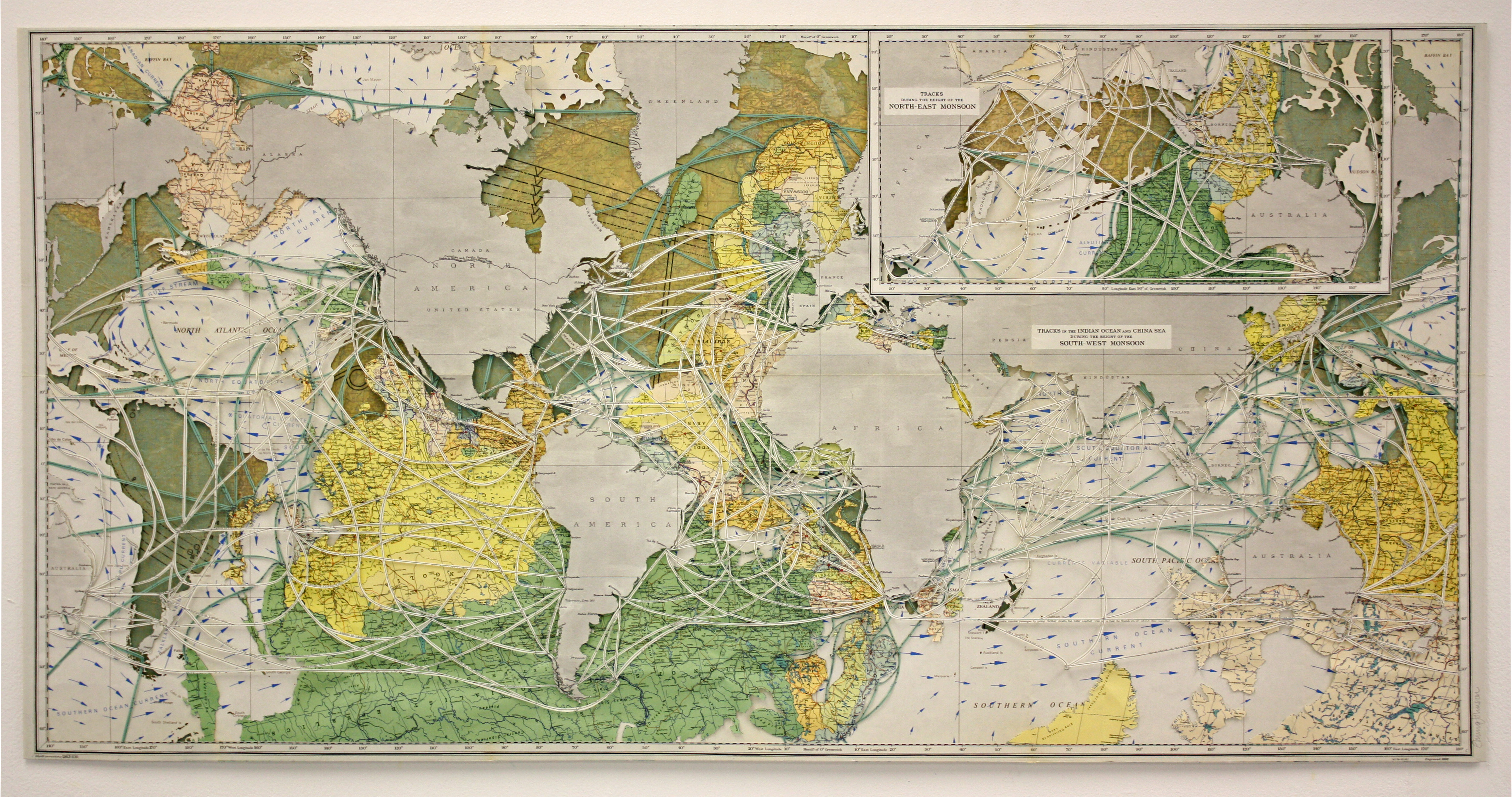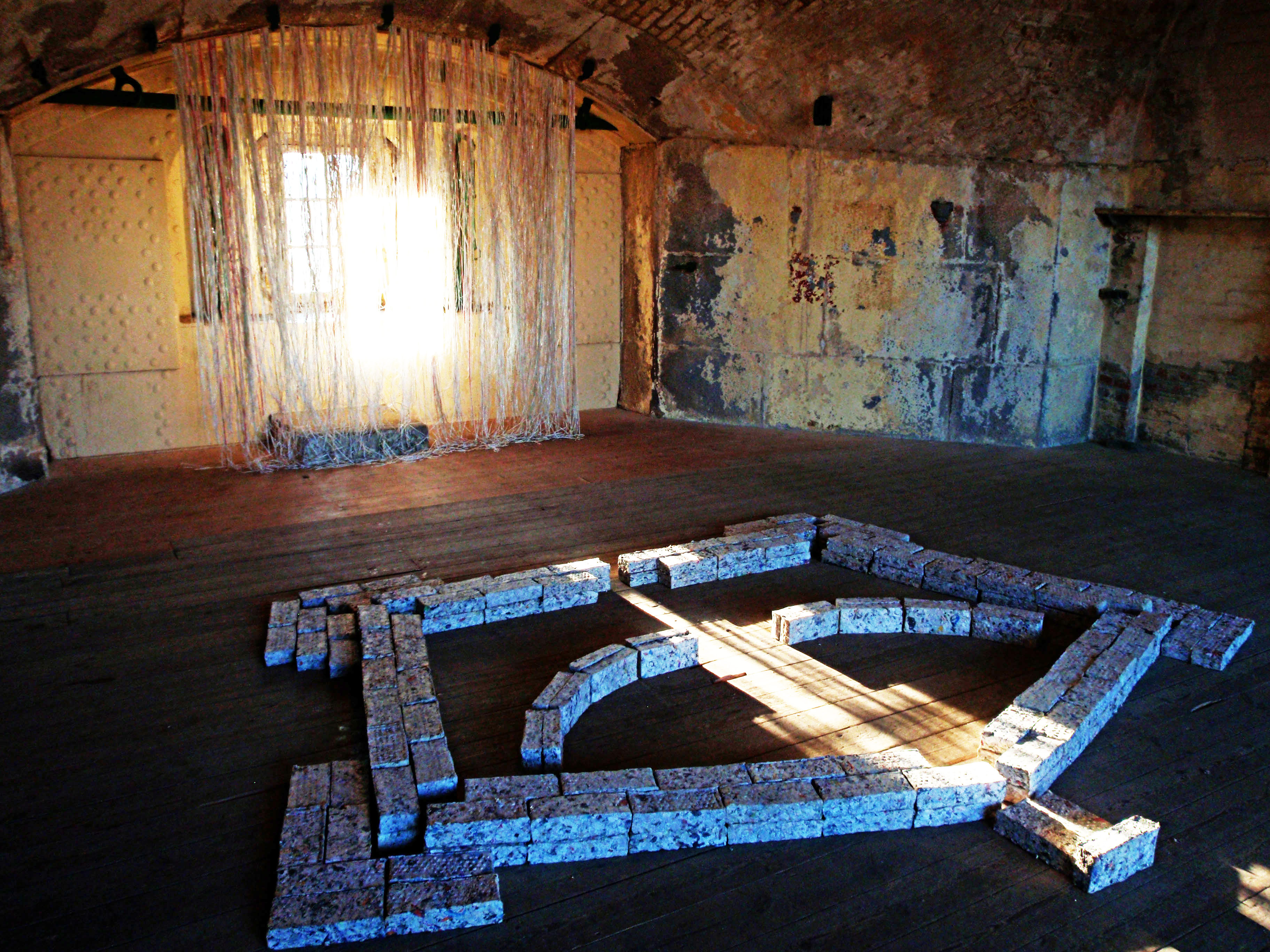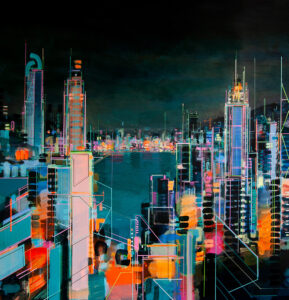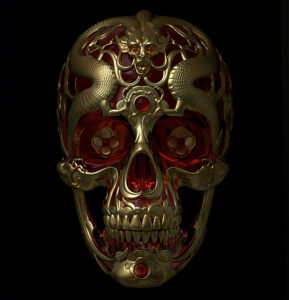We use cookies to make your experience better. To comply with the new e-Privacy directive, we need to ask for your consent to set the cookies. Learn more.
In the studio with Emma Johnson
In the sophomore installation of our In The Studio series, TAG Fine Arts speaks to Emma Johnson. She takes us on a tour of her former-US Airbase studio, shares some wise words about life, and explains the processes behind her delicate map work. You can find more of Emma's work here, and see her works in person at our booth at the London Art Fair, January 16–20th 2019.
How did your working relationship with TAG Fine Arts develop?
I started working with TAG Fine Arts when I was invited to take part in The Art of Mapping at the Air Gallery, London in 2011. After that, I was taken under their wing, and they began showing my work at various art fairs. More recently I have been working closely with TAG Fine Arts on a series of more specific commissioned pieces for clients.
What is your background?
I am a visual artist who lives and works in Suffolk, and I make painstakingly dissected, layered map pieces out of recycled roadmaps. I also paint, make collages, installations, and book art.
After training as a painter, first at Reading University, and then at The Slade School of Fine Art, my work moved away from painting as I became more interested in making site-specific installations. During this period I was involved in a lot of curation work, both in this country and abroad (particularly Eastern Europe), making artworks on site with locally sourced materials, and have worked and exhibited in places such as Poland, Hungary, and Ukraine.
My relationship with maps was accidental. I have been working with them for about 10 years, but prior to this, I had been making large installations and sculptures using recycled materials. I was given some maps and began experimenting with ways to change their physical structure. Cutting out the spaces between the roads not only made them unreadable but transformed the physical properties of the paper as it lost its rigidity. The first pieces were sculptural, but the map pieces very quickly became wall-based. I haven’t looked back since!
What inspired you to begin creating art?
I never decided to be an artist as such, I think I just assumed I would be! My mother was a dress designer and is a fantastic draughtswoman. She was always sketching when we were kids, and I wanted to be the same and hoped I would be as good as her one day. She still draws better than me!
Define what art means to you, in 150 characters or less.
Art needs to be visually beautiful, stimulating, challenging.
Asylum Studios, Suffolk
What is your workspace like?
I am a member of Asylum Studios, an Artist run co-operative on a disused US Airbase deep in the Suffolk countryside. It is basic but wonderful; a creative hub in a very unlikely setting – we inhabit the old Special Investigations building at Bentwaters, and with it, an atmosphere inherited from the Cold War era.
My studio space is on two levels, and I have a number of large tables set up for laying out maps, cutting and assembly downstairs. I also use this space for larger scale messy works such as paintings and sometimes sculpture. Upstairs is map storage, and a smaller cutting table.
It gets very cold in the winter, so when I am involved in more intense periods of cutting I have to decamp to my very small spare room at home.
The interior of Emma's workspace
Do you have any routine you follow when you’re creating?
Firstly I source as many maps as possible of the area the work is to represent – I then measure them all up and decide what size the finished piece will be. All the maps then have to be cut to the same size so that I can layer them on top of each other. I dissect the maps with a scalpel - this is the time-consuming part. Usually, I cut all the land/sea out, leaving a lattice of roads and rivers, but as all maps are different I have to make a decision as to which areas I will cut away before I start each sheet. I leave a border around the edge of each map – this holds them together, is where I put the spacers, and where they are eventually fixed together.
I collect as much information as possible (visual or otherwise) about the place I am researching – I collect photographs, postcards, books, and other materials and make sketches from them. Those sketches go towards designing the final template for the front image (or an embedded image) if I am using one.
What is your favourite work of art? Why does it inspire you?
Anish Kapoor's Void IV. Pure, immersive ultramarine. I first saw this at the Tate in Liverpool and had to be dragged away.
How important are current affairs and sociohistorical events to your works?
I would say that usually, it is the materials which inspire me – in my case these are maps, so inevitably the geography of the area I am working with will sometimes collide with some sort of socio-historical, or geopolitical theme. I made a piece called Flight (A Refugee Map of Europe) in 2016 after visiting Lesvos, and seeing refugees landing on the beaches. This had a profound effect on me and fed directly back into a map of Europe, depicting the routes across Europe in blood red ink poured across the map. Other recent works I have been making to commission have been based around the theme of Renewables – green energy sources such as solar power, wind turbines etc embedded into various parts of The United States and Europe.
Do you think social media has impacted your career? How so?
It definitely has. A revolution in the opportunity to network and self-promote, without which, I wouldn’t be talking to you now! In my case, it led directly to being invited to have work published, take part in exhibitions, make more contacts, and so on – a domino effect. I think it gives more power to the artist to promote their own work. Pre-internet we did this to a point - curating exhibitions or applying to galleries would rely on recommendations via word of mouth, writing letters, telephoning, reading journals, sending slides, waiting for replies. Arguably the same principle but much slower, and less efficient!
Do you create your best work independently or when within a community?
Both. Honestly, I am a bit of a hermit, so when I am working on a big map piece I tend to just get on with it. But there is always someone around at the studio to talk to if you want to. When I am making book art, however, I work in collaboration with a good artist friend (Helen Armstrong Bland) as The Subverted Unconscious Collective. Our work is quite different but there are shared themes and ways of looking at life which means our two working styles seem to gel perfectly.
What advice would you give to upcoming artists?
Be true to yourself. Work hard. Don’t give up.
Do you love what you do? Why?
Yes. I have always had a compulsion to make art. I am very lucky to be able to!
Emma Johnson - Battersea Bridge - courtesy of TAG Fine Arts
How would you describe your style?
In the past, my work has been described as minimalist, but my map art certainly isn’t. Obsessive, perhaps?
Emma Johnson's Time Tide
What is your quote to live by?
Make your own rules!
Installation view, Points of Reference
What artwork of yours would you like to be remembered for?
Rather than a single artwork, I think I would like to be remembered for “Points of Reference”, a solo exhibition and residency at Landguard Fort, Felixstowe in 2009. This brought together a large body of sculpture and installation work made from all sorts of recycled materials, and the beginnings of my work with maps. The setting was stunning, and so sympathetic to the materials, that the artworks almost became one with the building.
Installation view, Points of Reference
What are you working on at the moment?
A commissioned piece through TAG Fine Arts, which is a triptych of Houston, Texas area with a renewable energy theme.
This article was written by Helena Cardow. If you enjoyed reading it, share with friends on Facebook and Twitter, and don't forget to follow TAG Fine Arts on Instagram!




